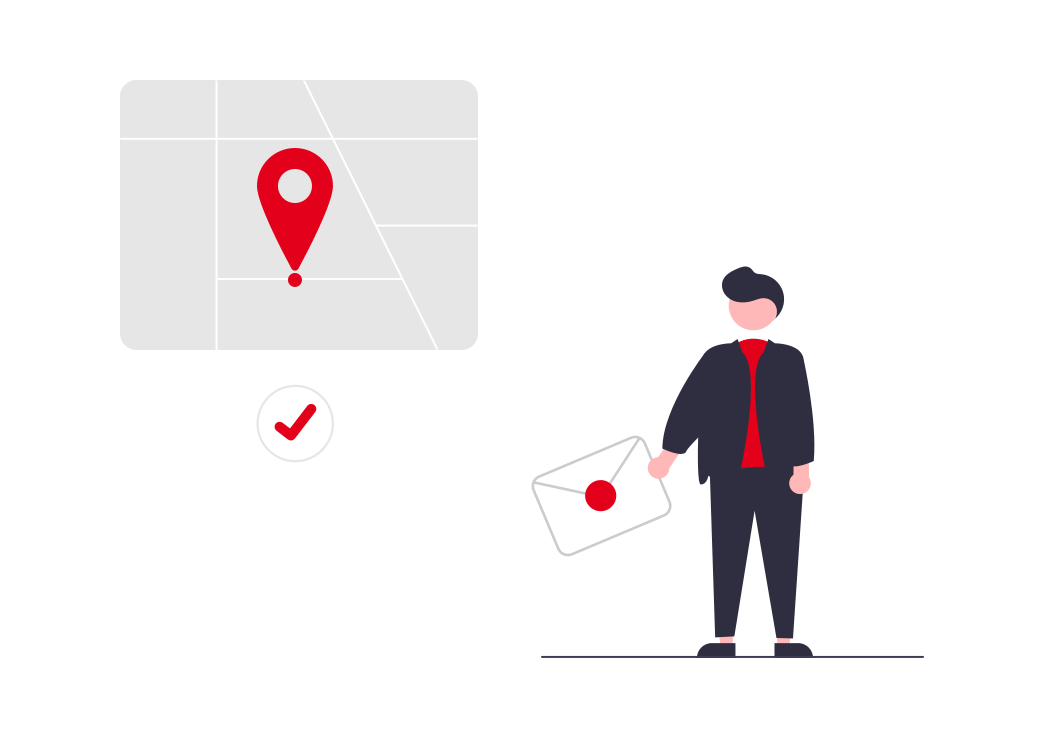
Senders’ and recipients’ data on EDI documents
Most producers are selling their products to consumers via retailers. Many retailers have more than one shop, bigger retail chains have hundreds of shops. When a supplier receives an order from a retailer, it is not enough to know whether it came from Maxima or Lidl. It is important to understand exactly from which shop, or even department or warehouse the order came from. And vice versa, invoices should be addressed not to the headquarters of the retailer, but to each individual shop or warehouse.
Why is addressing in EDI challenging?
One of the challenges in EDI is addressing. For regular mail to reach the recipients, every house needs a street address. Similarly, for electronic document traffic to reach the right recipients, the recipients need to have their unique electronic addresses. While for regular mail the geographic addresses are officially registered, there is no such registry for electronic addresses.
Could we perhaps use some of the codes that companies already have, like company registry codes, VAT codes or IBAN account numbers, for electronic addresses? As long as the company has just one business entity (one geographical location), it could work.
Companies with multiple business locations (eg, retailers)
However, it gets complicated when a company has multiple business locations. Many retailers have more than one shop, sometimes hundreds. Also restaurants often have more than one location. In these cases, the company registry code would not work, because there is just one describing the whole company. VAT code or bank account numbers are not suitable for the same reason.
Best practice: on EDI documents use GLNs for addressing
GLN (Global Location Number) is a globally unique 13-digit number used to identify locations. GLN is a close relative of GTIN, the barcode used to identify products. Both standards are kept by the global standard organization GS1.
For GLNs to be used on EDI documents, one should describe them also in ERP. Most business software have separate fields for GLN codes on vendor/customer cards. If there is no separate field, try to convince your software support company to create one or use some other code field for describing your partner’s GLNs.
Where can you get GLN codes for your company?
Just like GTINs, you can get GLNs from your local GS1 office. In Baltic states, these are:
In fact, if your company is already using registered GTINs for your company products, you probably also have a GLN code, as it is issued automatically for each member company.
What do GLNs identify?
GLNs can be used to identify any locations that need to be uniquely identified for administrative and trading purposes. These can be both internal locations and locations that your trading partners will use. GLNs can identify:
- Legal entities
- Any legal or operational entity, such as a company, its subsidiaries, buyer, seller or operating division.
- Functional locations
- Any virtual address such as a network address for use with electronic business messages.
- Physical locations
- Any specific location with a physical address, such as a shelf, loading dock, goods in delivery point, a warehouse, a room within a building.
How much do GLNs cost?
Becoming a member of the international standard organization GS1 involves joining fees and annual fees. If your company is already using registered GTIN ( the standardized product codes), you are likely already a member and paying the annual fees which include GLNs.
If you are not yet a member and will need only GLN codes (up to 10), the one-time joining fee is around 50-60 euros and there is a similar annual fee. For a retailer needing GLNs for more than 10 locations (up to 1000 shops), the annual fee is around 100 euros.
What are the benefits of using GLNs?
The most important reason for acquiring GLNs is to make sure your automation of supply chain data flows would function flawlessly. Using GLNs is definitely best practice in EDI. If you are not using GLNs yet, many of your trade partners will require you to start.
Global Location Numbers (GLNs)
- Enable the unique and unambiguous identification of all locations
- Can be allocated to any location in the supply chain
- Can be shown in GS1-128 barcodes
- Facilitate accurate and automatic processing
- Simplify data processing and reduce transmission costs and data storage costs for messages.
To summarize, by uniquely identifying parties and locations, GLN helps with tracking products, optimizing processes, and providing greater visibility to transactions taking place around the world. GLN does for parties and locations what barcodes (GTIN) do for products.
If you have any questions, please contact us.